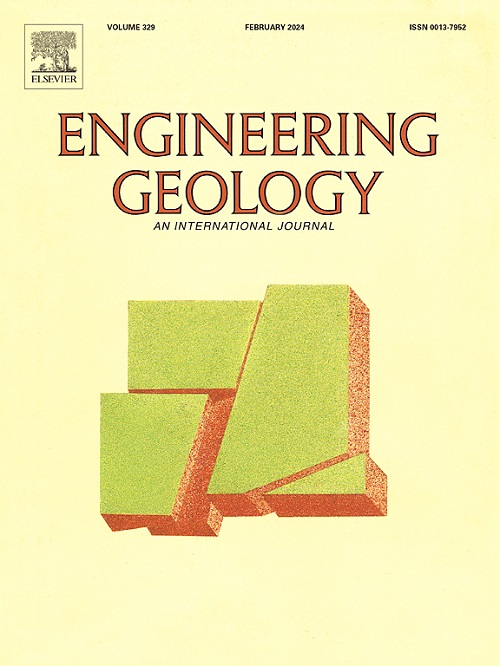Determining representative elementary volume for hydraulic conductivity of fractured rock masses: Comparative analytical and numerical studies
IF 6.9
1区 工程技术
Q1 ENGINEERING, GEOLOGICAL
引用次数: 0
Abstract
In rock engineering, hydraulic properties are typically estimated by investigating and analyzing the spatial distribution and mechanical characteristics of fractures, which is supplemented by a surface geological survey and limited in situ hydrogeological tests. However, these approaches face challenges owing to considerable scale effects in fracture distribution and geometric parameters, as well as variability in hydraulic test results across different scales. To address these issues, herein, we develop a method to reliably evaluate the representative hydraulic conductivity of in situ fractured rock masses through quantifying the impacts of influencing factors. Using the Heshe hydrogeological test site as a case study, the research extends the crack tensor theory and compares the findings with numerical analyses based on a discrete fracture network. Results indicate that a consistent representative elementary volume with a size of 16 m was identified for the Heshe well test site, despite the approach used. Additionally, this study highlights the notable impacts of aperture distribution on hydraulic conductivity evaluation, underscoring the importance of site-specific investigations and detailed analysis. Investigation scale considerably influences the variability of hydraulic conductivity, with a positive relation between fracture aperture and trace length that must be carefully considered for accurate assessments. Finally, a comprehensive field assessment method for hydraulic characteristics of fractured rock masses is proposed. The analytical approach allows for a rapid preliminary assessment of representative elementary volume; however, the precise modeling of hydraulic conductivity and seepage direction requires further hydrogeological tests. Meanwhile, the numerical approach, though more time consuming, provides detailed and proper assessments. Overall, the assessment methodology developed in this study offers a feasible and robust approach for hydrogeological investigations in engineering applications.
求助全文
约1分钟内获得全文
求助全文
来源期刊

Engineering Geology
地学-地球科学综合
CiteScore
13.70
自引率
12.20%
发文量
327
审稿时长
5.6 months
期刊介绍:
Engineering Geology, an international interdisciplinary journal, serves as a bridge between earth sciences and engineering, focusing on geological and geotechnical engineering. It welcomes studies with relevance to engineering, environmental concerns, and safety, catering to engineering geologists with backgrounds in geology or civil/mining engineering. Topics include applied geomorphology, structural geology, geophysics, geochemistry, environmental geology, hydrogeology, land use planning, natural hazards, remote sensing, soil and rock mechanics, and applied geotechnical engineering. The journal provides a platform for research at the intersection of geology and engineering disciplines.
 求助内容:
求助内容: 应助结果提醒方式:
应助结果提醒方式:


